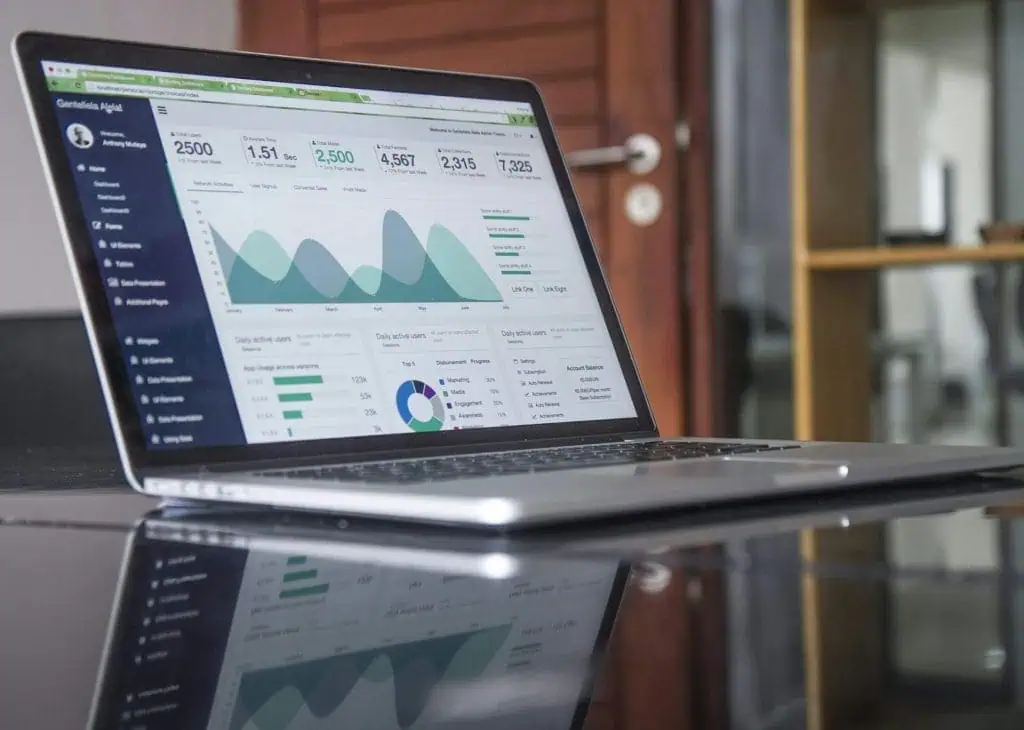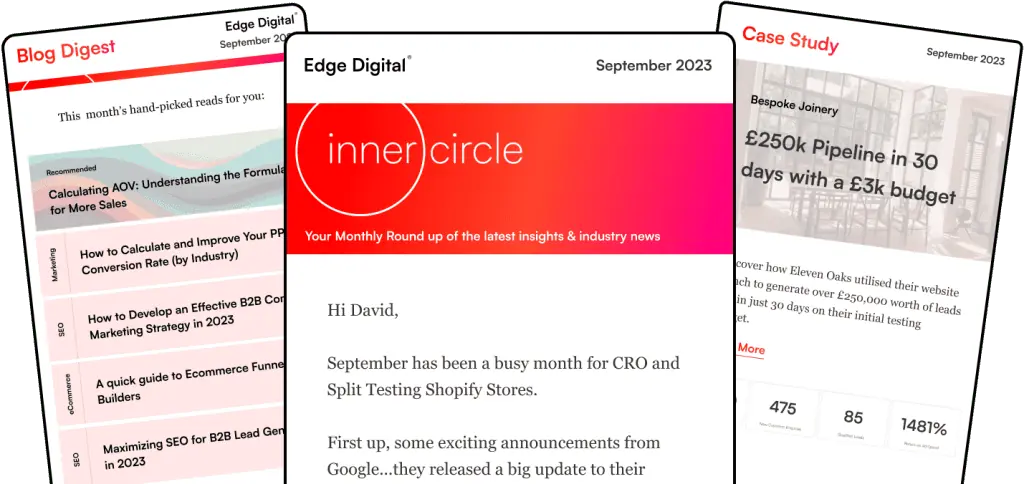Are you seeking ways to maximize the effectiveness of your digital marketing campaigns? Proficiently calculating and optimizing Pay-Per-Click (PPC) Return on Investment (ROI) can be the key to unlocking your business’s full potential. By learning how to measure PPC ROI, you can track metrics to improve your search engine marketing strategy, demonstrating the effectiveness of PPC efforts and proving the value of paid advertising to clients. This guide will dive into the intricacies of PPC ROI, discussing its importance, challenges in measuring it, and strategies to maximize your returns. Buckle up and get ready to unlock the hidden treasures of PPC ROI!

digital marketing PPC ROI
Key Takeaways
PPC ROI is essential for understanding ad campaign effectiveness and budget optimization.
Strategies such as optimizing ad copy, targeting the right audience, leveraging analytics & reporting tools can help businesses maximize PPC ROI.
A case study showcases a successful 5x increase in revenue growth with an effective PPC ROI optimization strategy.
Understanding PPC ROI: Why It Matters
The world of digital marketing is vast, with PPC advertising being a powerful tool to drive traffic and generate leads swiftly. However, just pouring money into PPC campaigns isn’t sufficient. Calculating PPC ROI becomes indispensable in determining campaign success. PPC ROI is crucial in assessing the effectiveness of ad campaigns and making informed decisions, ultimately driving business growth.
Regular investment in paid advertising campaigns is essential to outperform competitors and achieve optimum results.
A straightforward formula can be used to calculate PPC ROI, which also helps to calculate profit, without the need for a free PPC ROI calculator. Here are the steps:
Subtract the cost of the PPC advertisement from the revenue earned with clicks.
Divide that number by the cost again.
The resulting figure can be multiplied by 100 to obtain the percentage representing PPC ROI.
Understanding and calculating PPC ROI allows businesses to effectively allocate budgets, ensuring they’re either recovering their investment or profiting from their paid campaigns.
The Role of PPC ROI in Business Success
In the realm of digital marketing, the Return on Investment (ROI) and Return on Advertising Spend (ROAS) are two distinct yet related metrics. While ROI focuses on the overall expenditure and revenue generated, ROAS zeroes in on the profitability of the campaign in relation to the amount spent on advertising through a specific PPC platform. Keeping an eye on PPC ROI is crucial for validating budget allocation and assessing campaign effectiveness.
Understanding the relationship between ROI and ROAS enables businesses to make growth-oriented, data-driven decisions. A high PPC ROI indicates that a campaign is effectively driving conversions, generating sales, and ultimately increasing revenue. This knowledge empowers businesses to allocate budgets efficiently, optimize ad performance, and drive business growth.
Challenges in Measuring PPC ROI
Measuring PPC ROI can be fraught with challenges due to factors such as data privacy, tracking restrictions, and the complex nature of digital marketing channels. Data privacy, for example, has become a pressing concern with Google no longer supporting third-party cookies, which can impede the ability to track user activity and ROI.
Despite these challenges, businesses can implement solutions to effectively track PPC ROI. Some strategies include:
Utilizing marketing attribution tools like Ruler Analytics to track individual anonymous visitors
Implementing UTM parameter tracking in hidden fields
Creating dedicated landing pages for PPC campaigns
Additionally, tracking PPC ROI can be enhanced by using specialized tools for tracking and reporting on PPC ROI, which help create a reliable workflow to measure campaign success and adapt strategies.
By surmounting these obstacles, businesses can accurately measure their PPC ROI and make informed decisions to optimize their ad campaigns.

Measuring PPC ROI, making the current adjustments for your business and tracking correctly.
Key Components of Calculating PPC ROI
Calculating PPC ROI involves considering several key components, such as:
Ad spend: the amount of money allocated to bidding for ad placement across networks
Labor: the cost of the time and effort spent managing and optimizing PPC campaigns
Third-party costs: expenses related to tools, software, or agencies used to support PPC efforts
A well-calculated PPC ROI helps businesses understand the actual value of their campaigns, ensuring they stay on track to recoup their investment or generate profit from their paid campaigns.
The equation for calculating PPC ROI is quite straightforward. Here are the steps:
Take the revenue earned through clicks.
Subtract the cost of the PPC advertisement from it.
Divide that number by the cost again.
The resulting number can then be multiplied by 100 to obtain the percentage that represents PPC ROI.
Taking these key components into account enables businesses to precisely calculate their PPC ROI and make informed decisions for ad campaign optimization.
Ad Spend Management
Effective ad spend management is crucial for maximizing PPC ROI. Businesses can optimize their PPC ROI by:
Establishing a budget
Refining ad copy
Targeting the right demographic
Utilizing analytics and reporting tools
One way to reduce wasted ad spend and improve ad targeting is by utilizing negative keywords. Negative keywords prevent ads from being displayed to irrelevant audiences, ensuring that your ads reach the right people and maximize your ROI.
Ad extensions are another valuable tool to enhance PPC ROI, especially when used in conjunction with Google Ads. These supplementary features can be appended to a PPC ad to make it more conspicuous and provide additional information to potential customers. Ad extensions can improve PPC ROI by augmenting click-through rates and bettering ad visibility.
Effective ad spend management combined with the use of these strategies can significantly enhance a business’s PPC ROI.
Labor and Third-Party Costs
Considering labor and third-party costs is essential for accurately calculating PPC ROI.
Labor costs include:
Campaign setup and management
Monitoring and analysis
Reporting and communication
Ad creative development
Account maintenance
Third-party costs refer to the fees paid to an agency for their services.
Taking labor and third-party costs into account allows businesses to:
Precisely calculate their PPC ROI
Pinpoint areas that need improvement
Optimize their campaigns
Make informed decisions to boost their overall ROI.
Strategies for Maximizing PPC ROI
Maximizing PPC ROI involves implementing several strategies, such as optimizing ad copy and landing pages, targeting the right audience, and leveraging analytics and reporting. The implementation of these strategies can lead to improved PPC campaigns, enhanced digital marketing efforts, and ultimately, a boosted ROI.
In addition to these strategies, focusing marketing efforts on channels that drive the best results, such as search engine optimization (SEO), PPC, and paid social media, can further enhance ROI.
A successful PPC campaign begins with engaging ad copy that effectively targets the intended audience. Properly crafted and optimized landing pages can also contribute to increased conversion rates and a more positive user experience, leading to improved PPC ROI. Precise audience targeting and the use of relevant keywords can lead to maximized PPC ROI and propelled revenue growth for businesses.
Moreover, the use of analytics and reporting tools can offer invaluable insights into campaign performance, thereby enabling businesses to make data-driven decisions and optimize their PPC ROI.

Well designed and attractive landing pages help to boost those PPC campaigns and in turn improve ROI.
Optimizing Google Ads Copy and Landing Pages
Enhancing ad copy and landing pages can significantly improve PPC ROI by increasing conversion rates and providing a better user experience. A/B testing, persuasive language, visuals, customer reviews, and targeted keywords are some of the most effective methods to optimize ad copy and landing pages. Implementing these tactics can help businesses craft compelling ads that resonate with their target audience, leading to an increase in conversions and a boost in PPC ROI.
Utilizing ad extensions can also contribute to improved PPC ROI. Ad extensions, such as sitelinks, callouts, and structured snippets, provide additional information to potential customers, increasing click-through rates and conversions. Optimizing ad copy and landing pages can lead to maximized PPC ROI and an enhancement in overall digital marketing efforts for businesses.
Targeting the Right Audience
Targeting the right audience is critical to maximizing PPC ROI. By attracting high-quality leads and reducing wasted ad spend, businesses can significantly improve their ROI. Here are some strategies to consider:
Research the target audience to gain insight into their preferences and interests.
Customize ads to align with those preferences.
Conduct keyword research and organize keywords into groups to enhance the relevance and efficacy of ads, ensuring they reach the intended audience.
Employing strategies such as retargeting, audience overlays, and testing different targeting criteria can further optimize audience targeting and improve PPC ROI. Effective audience targeting can lead to an enhancement in digital marketing efforts and a boost in revenue growth for businesses.
Leveraging Analytics and Reporting
Utilizing analytics and reporting tools is essential for optimizing PPC ROI. Tools such as Google Analytics, Supermetrics, and various PPC software solutions can provide valuable insights into user engagement, conversion rates, and campaign performance. By monitoring essential metrics like cost per click, click-through rate, and conversion rate, businesses can make informed decisions to optimize their campaigns.
Employing analytics and reporting tools offers several benefits for businesses, including the ability to:
Experiment with different ad copy variations
Make minor modifications to the copy and design of ads
Boost conversion rates
Continuously monitor campaign performance
Optimize PPC ROI
Make informed decisions that drive business growth

Tracking and analysing continuously with daily reports
Comparing PPC ROI with Other Performance Metrics
Comparing PPC ROI with other performance metrics like ROAS can provide valuable insights into the overall effectiveness of digital marketing efforts. While ROI evaluates the overall profitability of an advertising campaign, considering all expenses and revenue produced, ROAS specifically focuses on the efficiency of the advertising expenditure, computing the revenue generated for each dollar spent on advertising.
Contrasting PPC ROI with metrics such as ROAS allows businesses to:
Identify the most lucrative campaigns
Identify campaigns that require optimization
Make informed decisions about budget allocation
Optimize campaigns to improve overall digital marketing efforts.
Understanding ROAS
Return on Advertising Spend (ROAS) measures the revenue generated per dollar spent on ads, providing a more specific view of ad campaign performance compared to PPC ROI. The formula for return on ad spend is calculated by dividing the money spent on advertising by the gross income generated from that advertising, which is directly related to the profit margin. The break-even figure for ROAS is 100%, making it a baseline aim that can help prevent incurring superfluous expenses.
Understanding the relationship between ROAS and PPC ROI can equip businesses with the necessary insights to make informed decisions regarding budget distribution and campaign optimization. An effective balance between ROI and ROAS can help businesses maximize their digital marketing efforts and spur revenue growth.
Balancing ROI and ROAS
Maintaining a balance between ROI and ROAS is essential for making informed decisions about budget allocation and campaign optimization. Measuring ROAS at various levels, structuring campaigns according to performance, and calculating ROAS to ensure a worthwhile return on investment are all effective strategies for balancing ROI and ROAS.
By effectively balancing ROI and ROAS, businesses can gain a comprehensive view of their digital marketing efforts and make informed decisions to optimize their campaigns. This balance enables businesses to allocate budgets efficiently, optimize ad performance, and drive business growth.
Case Study: Successful PPC ROI Optimization
In a recent case study, a health and fitness company increased their PPC ROI by 5x by optimizing their PPC campaigns. The implementation of strategies like refining audience targeting, improving ad copy and landing pages, and utilizing analytics and reporting tools enabled the company to maximize their PPC ROI and significantly augment their revenue growth.
This success story demonstrates the power of planning, optimization, and continuous testing in driving successful PPC campaigns.
The Challenge
The health and fitness company faced challenges such as high ad spend, low conversion rates, and inadequate targeting. These challenges hindered the company’s ability to optimize their PPC ROI, ultimately impacting their overall digital marketing efforts and revenue growth.
The Solution
To address these challenges, the company implemented a comprehensive PPC ROI optimization strategy. This included refining audience targeting, improving ad copy and landing pages, and leveraging analytics and reporting tools.
The employment of these strategies led to optimized PPC campaigns and maximized ROI for the company.
The Results
As a result of implementing the PPC ROI optimization strategy, the health and fitness company experienced the following benefits:
5x increase in their PPC ROI
Increased conversion rates
Reduced ad spend
Improved overall business performance
Revenue growth

PPC ROI optimization implementation will grow your sales
Summary
In conclusion, calculating and optimizing PPC ROI is crucial for maximizing the effectiveness of digital marketing campaigns. By understanding the importance of PPC ROI, addressing the challenges in measuring it, and implementing strategies to maximize returns, businesses can drive growth and boost revenue. Whether you’re a digital marketing novice or a seasoned expert, optimizing your PPC ROI can unlock your business’s full potential and propel it towards success.
Frequently Asked Questions
What is ROI in PPC?
ROI in PPC is the ratio of net profit to total costs, including advertising expenses on Google Ads and other platforms. By taking all expenses into account, you can get an accurate picture of your returns from PPC campaigns.
How do you calculate ROI for PPC ads?
To calculate ROI for PPC ads, subtract the cost of the advertisement from the revenue generated by clicks, divide this number by the cost again, and multiply the result by 100. This gives you the overall profit that you’ve made from your ads compared to how much you’ve spent on them.
What is the average PPC return?
On average, businesses see a 200% return on their PPC ad spend, with an average revenue of $2 earned per every $1 spent. The average conversion rate for PPC is 2.35%, and the average conversion rate for Google Ads is 3.75%. Advertisers aiming for a good conversion rate should aim higher than the average at 10%.
Which is better SEO ROI or PPC ROI?
Overall, SEO tends to have a higher return on investment than PPC, offering better click-through rates and lower costs per acquisition. For B2C Ecommerce and Legal Services, the gap is particularly large, with SEO converting customers at 2.8x and 2.4x the rate of PPC, respectively.
What are the key components to consider when calculating PPC ROI?
When calculating PPC ROI, the key components to consider are ad spend, labor, and third-party costs.



